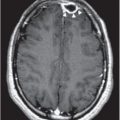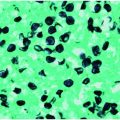| Reaction category | Clinical manifestation | Common examples for antibiotics | Timing for sensitization with the first use of the drug | Onset after re-exposure to the drug | Skin tests | In vitro tests | Readministration of the drug (DPT/desensitization) |
|---|---|---|---|---|---|---|---|
| Type I (IgE) | Urticaria, angioedema, rhinitis, bronchospasm, anaphylaxis | β-lactam antibiotics Sulfamethoxazole | Required: 1–2 wk | Usually within 1 h (rarely after hours) | Immediate (wheal/flare)a Intradermal tests | RAST (serum IgE) Serum mast cell tryptase level Basophil activation | Desensitization if skin test + |
| Type II (IgG and complement) | Hemolytic anemia, drug-induced nephritis, thrombocytopenia, neutropenia | Penicillins Cephalosporins Sulfonamides | Required: 1–2 wk | Many days or weeks | None | Complete blood count Coombs tests | Cautious DPT |
| Type III (IgG immune complexes) | Serum sickness, fever, vasculitis | Penicillins Cephalosporins Sulfonamides Streptomycin | Required: 10–21 d | Usually days to weeks | None | ESR CRP Immune complex Serum complement levels | Cautious DPT |
| Type IVa (Th1 lymphocytes) | Allergic contact dermatitis | Penicillins Neomycin Bactrim | Required: 1–3 wk | 8–120 h | Patch tests Intradermal tests (delayed response at 48–72 h) | Lymphocyte transformation tests | Likely contraindicated |
| Type IVb (Th2 lymphocytes) | Maculopapular eruptions | Penicillins, especially diaminopenicillins like amoxicillin and ampicillin Sulfonamides | Required: 4–14 d | Patch tests Intradermal tests (delayed response at 48–72 h) | Lymphocyte transformation testsb | DPT useful | |
| Type IVc cytotoxic lymph. (perforin/granzyme B) | Contact dermatitis, maculopapular and bullous exanthema, hepatitis, SJS, TEN | Sulfonamides Penicillins Macrolides | Required: 1–2 wk | Patch tests Intradermal tests (delayed response at 48–72 h) | Lymphocyte transformation testsb | Contraindicated (for bullous exanthem and SJS/TEN) | |
| Nonimmunologic | Urticaria, angioedema, rhinitis, erythema bronchospasm | Vancomycin (red man syndrome) | Not required Reaction may occur with first dose | Within minutes, infusion rate dependent | None | None | Slow infusion Use premedication |
Abbrevations: DPT = drug provocation tests; ESR = erythrocyte sedimentation rate; CRP = C-reactive protein; RAST = radioallergosorbent test; IgE = immunoglobulin E; IgG = immunoglobulin G; SJS = Stevens–Johnson syndrome; TEN = toxic epidermal necrolysis.
a Only validated for penicillin skin testing, which has high negative predictive value. Positivity may be helpful with certain antibiotics; however, negative skin tests do not exclude the diagnosis for many immediate reactions to antibiotics.
b Clinically false positivity may occur.
According to Gell and Coombs, as modified.
However, some drug reactions resemble allergic syndromes but are not immunologic in origin. These nonimmune hypersensitivity reactions are also known as “pseudoallergic reactions.” Most pseudoallergic reactions mimic type 1 IgE-mediated reactions such as urticaria, angioedema, bronchospasm, and anaphylaxis. In such cases basophils and mast cells are activated by nonimmune mechanisms, and vasoactive mediators are released.
In this chapter, we review type B ADRs to antibiotics with a focus on current concepts in the diagnosis and management of allergies to β-lactam antibiotics, the prototype of immunologic drug allergies. We also address the management of multiple antibiotic sensitivity syndromes.
Epidemiology of antibiotic allergy
β-Lactams and sulfonamides are the most prevalent causes of antibiotic hypersensitivity. In a cross-sectional survey of a general population from Porto, Portugal, history of hypersensitivity to penicillin and other β-lactam antibiotics was found in 4.5% of adults. In the United States, in recent large healthcare insurance database studies, history of hypersensitivity to penicillin was recorded in about 10% of patients. Data from developing countries are limited, but suggest that penicillin allergy is the most commonly reported antibiotic allergy. History of hypersensitivity to sulfonamides has been reported to occur in 2% to 4% of populations, but is increased among acquired immunodeficiency syndrome (AIDS) patients to 40% to 80%. Immunologic reactions to the newer classes of antibiotics are often rare and poorly documented. The perceived relative risk of immunologic drug reactions with commonly used antibiotics is given in Table 210.2.
| Risk of inducing an immunologic reactiona | Antibiotic (or its class) |
|---|---|
| Common (>2%) | Penicillins Antimicrobial sulfonamides Nitrofurantoin |
| Intermediate (0.1%–2%) | Bacitracin Cephalosporins Penems Itraconazole Quinolones Minocycline |
| Rare (0.1%) | Monobactam (aztreonam) Aminoglycosides Amphotericin B Chloramphenicol Clindamycin Fluconazole Griseofulvin Ketoconazole Macrolide antibiotics Vancomycin Tetracyclines Polymyxin Metronidazole |
a Among patients receiving multiple courses of therapy.
Burden of antibiotic allergy
β-Lactams are among the most commonly prescribed antibiotics for treatment of many types of bacterial infections. However, recent data show a significant decrease in β-lactam prescriptions, in part due to a rising prevalence of histories of allergy, which can exceed 30% in intensive care environments. Emergence of bacterial resistance as well as introduction of newer antibiotics have also contributed to this trend. Prescriptions of quinolones and macrolides as alternative antibiotics for common infections have been increasing as has the use of vancomycin in patients with histories of penicillin allergy, yet only 10% to 15% of the subjects with a history of penicillin reactions have positive type I skin tests. Unevaluated histories of antibiotic allergies may lead to the substitution of often less effective or more toxic, and more expensive, alternative drugs, which can result in high medical and economic burdens on health care. In a retrospective study of hospital practice, penicillin-allergic patients had higher antibiotic costs and were more likely to receive a broader-spectrum antibiotic such as cephalosporins, macrolides, and quinolones. At the Mayo Clinic, prophylactic vancomycin use in patients with a history of penicillin or cephalosporin allergy undergoing elective orthopedic surgery was substantially reduced by targeted allergy consultation and penicillin allergy skin testing. Similar benefits are likely to occur in patients with histories of other antibiotic allergies who are appropriately evaluated before alternative antibiotics are selected.
Clinical features
The presentation of antibiotic allergies is similar to known hypersensitivity reactions, and the clinical features are variable depending on the type and severity of the reaction and the organ systems affected (Table 210.1). Many factors such as the immunologic profile of the antibiotic; treatment factors, including dosage, administration route, and frequency; host factors such as immune status and comorbidities; and the inflammatory milieu in which antibiotics are used can influence the frequency and characteristics of hypersensitivity reactions.
The skin is the most common organ involved in antibiotic reactions. Maculopapular eruptions (MPEs), urticaria, and pruritus are the most common presentations that typically occur after hours, days, or even weeks of antibiotic exposure but can also be part of an acute allergic reaction. Immunologic drug reactions require a sensitization period, whereas a nonimmunologic mast cell release can occur on first exposure in susceptible patients. Antibiotics can also cause severe but rare exfoliative skin syndromes such as toxic epidermal necrolysis (TEN) and Stevens–Johnson syndrome (SJS). Other targeted organ manifestations such as interstitial pneumonitis and immune cytopenias are rare. Life-threatening reactions such as anaphylaxis are also rare. Although β-lactams are the most common antibiotic class inducing anaphylaxis, IgE antibody responses have also been documented for sulfonamides; those now in use are given in Table 210.3.
| Antibiotic | Common | Less common/rare |
|---|---|---|
| β-lactams | Urticaria, MPE | Exfoliative dermatitis, TEN, SJS, serum sickness syndrome, vasculitis, cytopenias, anaphylaxis, nephritis |
| Sulfonamide | Fixed drug eruption HIV(+): delayed MPE+fever, urticaria, angioedema | Erythema multiforme, SJS, TEN Anaphylactic reactions |
| Quinolones | Urticaria, FDE, photoallergic reactions | Acute interstitial nephritis, acute hepatitis, serum sickness, SJS, TEN, MPE, acute pancreatitis, anemia; thrombocytopenia |
| Macrolides | Urticaria, angioedema, FDE, and MPE | TEN, vasculitis |
| Vancomycin | “Red man syndrome,” lineary IgA bullous dermatosis | MPE, FDE, vasculitis, thrombocytopenia, erythema multiforme, and urticaria anaphylaxis |
Abbrevations: FDE = fixed drug eruptions; MPE = maculopapular eruption; TEN = toxic epidermal necrolysis; SJS = Stevens–Johnson syndrome; IgA = immunoglobulin A; HIV = human immunodeficiency virus.
Clinical assessment
Drug allergy syndromes are recognized by the constellation of signs and symptoms identified with a particular mechanism of immunopathology (Table 210.1). Appropriate diagnosis of these cases depends largely on careful history taking, with attention to prior drug experience and the chronology of the reaction, supplemented by compatible physical and laboratory findings, and knowledge of drug allergenicity profiles. For atypical or discordant reactions, skepticism is appropriate to avoid labeling the patient as “drug allergic” incorrectly.
Step 1: initial evaluation
History taking
A detailed history is essential for the initial evaluation of patients with suspected drug allergies. The history guides a decision about performing further diagnostic testing and other evaluation strategies. It is also possible to make a reasonable decision about risks of reintroduction of the suspected drug by using historical detail. Medical records that describe previous reactions and treatment can be very helpful, especially in patients with vague histories or altered mental status. Occasionally, information provided by a relative or friend who witnessed the event can also be very helpful in differential diagnosis.
Stay updated, free articles. Join our Telegram channel

Full access? Get Clinical Tree





